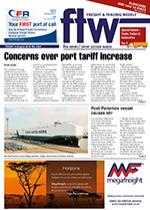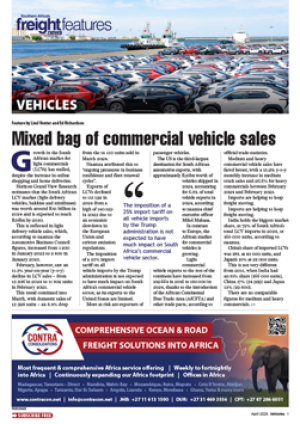Headway is finally being made with the contentious high cube issue after Minister of Transport Blade Nzimande agreed to meet with industry representatives in Cape Town.
With the lifting of a moratorium that will see the movement of high cube containers in the country restricted to a height of 4.3m a mere four months away, this could not be more needed.
“We are extremely encouraged by the minister’s call for a meeting,” said Road Freight Association (RFA) spokesman, Gavin Kelly. “This is what we have been asking for and we believe it’s an extremely positive move on his side.”
Kelly said the meeting followed years of letters to the various ministers of transports trying to engage on the issue with many requests made to meet. “His call asking for a meeting is therefore really appreciated,” Kelly told FTW. Hope of finding a solution over the high cube issue plummeted earlier this year when Nzimande, shortly after his appointment as Transport Minister, responded to the Western Cape MEC of Transport, Donald Grant, in a letter saying government would not change its stance on the 4.3 m height.
According to Kelly the RFA, along with several industry organisations, including the South African Association of Freight Forwarders (Saaff), the Federation of East and Southern African Road Transport Associations (Fesarta), the Durban Harbour Carriers Association and the South African Association of Ship Operators and Agents (Saasoa), wrote a letter to Nzimande explaining the far-reaching effects of the decisions made by the Department of Transport contained in his letter to Grant.
The most recent letter certainly seems to have caught Nzimande’s attention for a number of reasons. These include facing the government head-on about roads not getting higher when resurfaced, one of government’s main reasons for the 4.3m height restriction, and the argument that there are similar height restrictions in other countries. Most important of all, the letter made it clear that industry simply does not have the financial means to transform the country’s entire trailer fleet to accommodate a height restriction of 4.3m, simultaneously absorbing the economic impact of a height restriction.
“We’ve been asking for a meeting with the Minister of Transport for years,” Kelly told FTW. “This is the first time we have been granted this audience on this matter. Whether it results in the height restriction remaining at 4.6m as the moratorium currently allows, has yet to be seen. We are positive that the minister is at least willing to meet with us and talk to us about the issue.” Measuring 2.9m, when high cube containers are transported on the back of a normal transport vehicle, they exceed the height of 4,3m as prescribed by South African law, measuring around 4.6m. A moratorium, implemented in 2011, currently gives blanket exemption to all ISO containers where the overall height exceeds 4.3m.
According to Kevin Martin of Freightline Transport, who at the time of the moratorium signing represented industry, there is no reason for government to insist on a 4.3m height restriction as there have been no incidents in the past seven years where a high cube proved to be unstable or caused damage to road infrastructure.
“Double-decker buses legally run at 4.6m heights in South Africa. For trucks the government does not even have to agree to a 4.6m height,” he said. “An agreement of 4.5m would be enough and we could continue to move high cubes on the current trailer fleet.” He said from a safety perspective the government guidelines stated that the height of a load had to be less than double the width of the axles.
“Our axles are 2.45m in width, which gives you a height of 4.9m. That would be for an average load and one would of course have to apply one’s mind to what you are moving. “The point I’m trying to make is that the guideline says it’s safe at 300mm more than the 4.6m they want to remove. That means that 4.5m would also be safe and it would be sufficient.” At the time of going to press stakeholders were preparing to meet with Nzimande this past Monday.
INSERT
This is the first time we have been granted an audience with the minister. – Gavin Kelly

